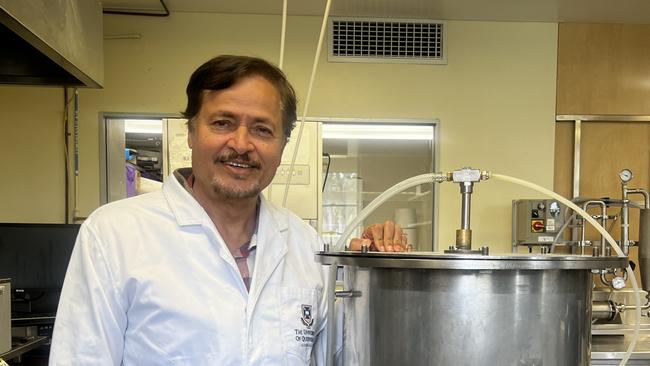Bhesh Bhandari is our top researcher in food science and technology
Bhesh Bhandari from the University of Queensland is Australia’s top researcher in food science and technology.

Thanks to the work of food scientist Bhesh Bhandari and his team, one day you could be eating mashed-up insects, 3D printed into the shape of a tasty chicken drumstick.
He’s also developed a drink with probiotics contained in tiny capsules to protect the bacteria from stomach acid. It is already on supermarket shelves.
But ask Bhandari whether he can cook, and the answer’s an unequivocal no, as he’s much handier in the laboratory than the kitchen.
“When I tell people I work with food science research, they ask me whether I can cook, and I really can’t,” says the University of Queensland professor who is named in The Australian’s 2025 Research magazine as Australia’s top researcher in the field of food science and technology.
“I think of food like a material. I work on food materials, science and engineering. Most of the things I do are in terms of developing a process.”
Originally from Nepal, Bhandari did his PhD in food process engineering in 1992 at ENSIA, a large agricultural university in Massy, near Paris, before coming to Australia the following year.
Since then, he’s been at the University of Queensland, where he and his team have been at the forefront of a range of innovations, including microencapsulation, using nanobubbles as a food processing aid and 3D printing of food.
“I’ve been working for the last 30 years, so that means I’ve covered a lot of areas,” Bhandari says. “My motivation is mostly driven by my curiosity and a desire to introduce new innovative technologies.”
Among many breakthroughs has been his world-leading work on 3D printing of food materials, a technology he says has a huge range of future applications. Bhandari describes how any food, such as fish, can be converted into powder form, which can be printed in layers to form a food product. One idea is to print insect protein into a more palatable foodstuff.
“Insects are something that most people will not eat,” he says. “But convert it into a powder form, and print it in a nice shape and people will eat it. Insect protein is cheap, and a good source of animal protein, so it’s very healthy.”
He’s also worked extensively on using nanobubbles in food processing. These tiny bubbles of gas have unique properties that can make a food product softer, or decrease its viscosity or extend its shelf life.
Another of his key research areas has been encapsulation techniques for food stuffs using tiny capsules smaller than 50 microns. Bhandari has used these capsules in developing a probiotic rich drink, PERKii.
“Probiotics normally die in the stomach, but when you encapsulate them they survive in the stomach, and then reach the intestine where they’re needed,” Bhandari says.
The novel encapsulation technology has also been used to create a dried form of ethylene, which can be used to ripen food in a powder form, rather than a gas.
“It’s fascinating developing these processes, but it’s never ending, because as soon as you get something to work on you think you’ve got it covered, but then there’s another issue,” he says. “But I like to keep working on fresh ideas and technologies that keep me and the team excited.”



To join the conversation, please log in. Don't have an account? Register
Join the conversation, you are commenting as Logout